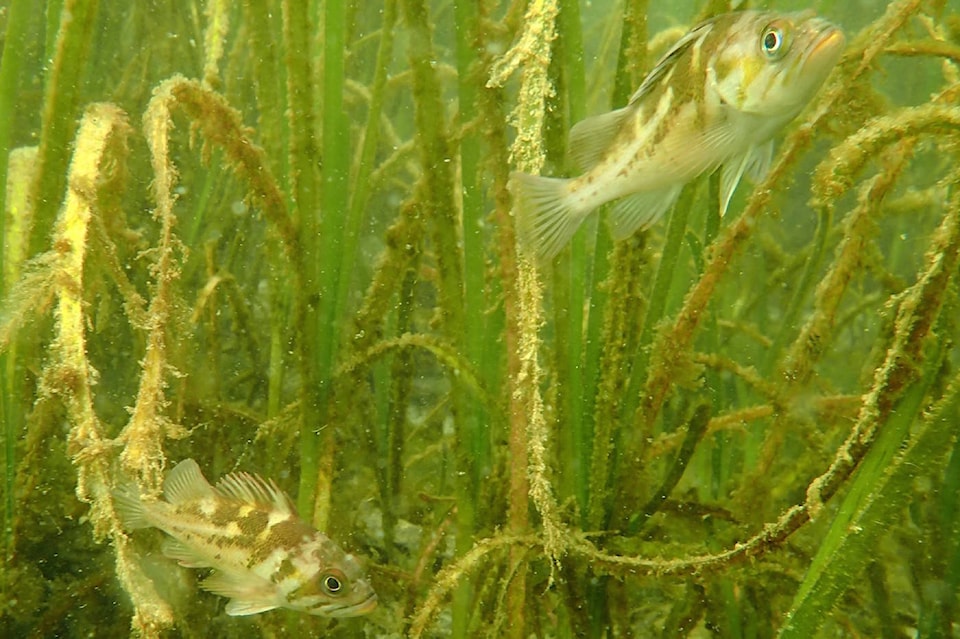Seagrass meadows are all around the Saanich Peninsula, and they teem with all sorts of life, but in a new study, scientists found that boat traffic can be harmful to their biodiversity.
Josie Iacarella — a UVic post-doctoral fellow — and Julia Baum, a biology professor, led a collaboration between government, NGOs, and academics to examine 89 seagrass meadows on the Pacific Coast, including meadows in Saanich Inlet, Victoria Harbour and Sooke Harbour.
In an interview with the PNR, Iacarella said Parks Canada has done fish surveys for 12 years in the park reserves, so she wanted to expand that research. Because there were so many sample sites, the final study required nine teams to collect data, comprised of park staff and other scientists who are co-authors of the study.
As part of their research, scientists used beach seines (large C-shaped nets). They would get in their waders and hold the net in the water, close it slowly, and count and record the species that are caught while on a boat (they are released right away). Quadrat sampling is also used.
Iacarella said seagrass meadows are full of life because they provide refuge for fish. Lots of epiphytes like algae grow on the surface of the grass, feeding the invertebrates that eventually feed the fish.
Seagrass also grows in estuaries, so when salmon are coming as juveniles, they will stay in seagrass meadows to hide from predators and adjust to the salinity. As they grow larger, they move out of the meadows.
When seagrass meadows are located away from docks and places of human activity, scientists found a greater diversity of species, including gunnel fish and pipefish (a keystone, or important, species for its ecosystem). Both fish are long and slender, so they swim slowly. They also tend to remain close to their eggs to guard them, so they are less likely to escape when a propeller is nearby.
In areas with higher levels of human activity, only hardier species can be found like the threespine stickleback. Propeller wash can rip up grass or stir up sediment, creating murky conditions which make it hard for fish to find food.
Anchoring kills eelgrass, creating patchy habitats and fewer places for fish to live in.
With just a handful of dominant species that can adapt to human activity, the community might be less resilient in the face of change, said Iacarella.
In a worst-case scenario, there could be ecosystem collapse.
“Boaters can and should avoid driving over seagrass meadows, they shouldn’t anchor in them for sure,” said Iacarella.
“Having a propeller down in those meadows is pretty disruptive. You can often, especially on a clear day, see the meadows when driving in shallow areas, so those areas should be avoided to protect those spaces.”
“If we want to protect the range of biodiversity along the coast, we need to start reducing our activity in these areas,” said Iacarella.
reporter@peninsulanewsreview.com
Like us on Facebook and follow us on Twitter
reporter@peninsulanewsreview.com
